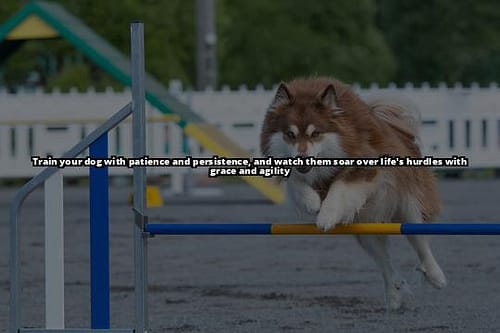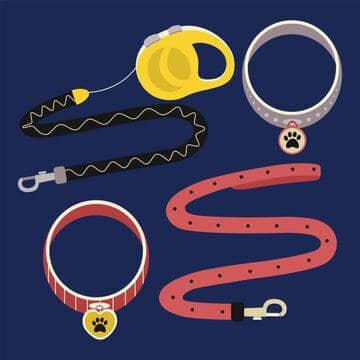Hoopers Dog Agility: Essential Tips for Training Success
Learn about Hoopers Dog Agility
- Definition, history, and benefits of Hoopers Dog Agility.
- Equipment needed, training tips, and competition preparation.
- Safety measures, health concerns, and success stories in Hoopers Dog Agility.
Definition of Hoopers Dog Agility
Hoopers dog agility is a relatively new and exciting dog sport that focuses on speed, accuracy, and teamwork between the dog and handler. Unlike traditional agility courses that involve contact obstacles like A-frames and teeter-totters, hoopers agility primarily consists of hoops, barrels, tunnels, and gates. The emphasis is on flowing sequences rather than tight turns or complicated maneuvers, making it accessible to dogs of various sizes and physical abilities.
History and Evolution of Hoopers Dog Agility
Originating in the UK, hoopers dog agility was developed as a low-impact alternative to traditional agility to accommodate dogs with physical limitations. It quickly gained popularity for its inclusive nature and fun, fast-paced style. As a result, hoopers agility has spread worldwide and is now recognized as a competitive sport in many countries.

Benefits of Hoopers Dog Agility for Dogs and Handlers
Hoopers agility offers a wide range of benefits for both dogs and handlers. For dogs, it provides mental stimulation, physical exercise, and a chance to strengthen the bond with their owners. The sport also helps improve confidence, agility, and focus. For handlers, hoopers agility offers a fun and rewarding way to engage with their dogs, improve communication skills, and build trust and teamwork.
Getting Started with Hoopers Dog Agility

Equipment Needed for Hoopers Dog Agility
1. Essential Equipment List
To start training in hoopers dog agility, you will need basic equipment such as hoops, barrels, tunnels, and gates. Additionally, a sturdy leash, harness, and plenty of treats for positive reinforcement are essential.
2. Tips for Choosing the Right Equipment
When selecting equipment for hoopers agility, consider your dog’s size, age, and skill level. Opt for durable, safe equipment that is appropriate for your dog’s physical abilities. Adjustable hoops and lightweight tunnels are good options for beginners.
3. Setting Up a Hoopers Agility Course
Create a hoopers agility course in a spacious, safe area with proper footing. Arrange the obstacles in a flowing sequence, keeping in mind the dog’s comfort and safety. Start with simple layouts and gradually increase the complexity as your dog progresses.
Finding a Suitable Training Area
Look for a flat, grassy area free from distractions to set up your hoopers agility course. Ensure the space is large enough to accommodate the obstacles and allows for smooth movement for both the dog and handler.
Understanding Hoopers Dog Agility Courses
Hoopers agility courses are designed to test the dog’s speed, accuracy, and responsiveness to directional cues. Courses typically include a series of hoops, barrels, tunnels, and gates arranged in various patterns. The goal is to complete the course within a set time frame with minimal errors.

Training Your Dog for Hoopers Dog Agility
Basics of Hoopers Agility Training
Start hoopers agility training by introducing your dog to each obstacle separately. Use positive reinforcement techniques such as treats, praise, and toys to motivate and reward your dog for successful attempts. Gradually combine obstacles into sequences to build fluency and confidence.
Building Confidence and Teaching Directional Cues
Confidence-building exercises, such as obstacle familiarization and short, successful training sessions, are crucial for hoopers agility training. Teach directional cues like “left,” “right,” and “go straight” to guide your dog through the course efficiently.
Mastering Different Obstacles in Hoopers Agility
Practice each obstacle extensively to help your dog master the required skills. Focus on proper technique, speed, and accuracy when navigating hoops, tunnels, barrels, and gates. Tailor training sessions to address your dog’s strengths and weaknesses.
Importance of Positive Reinforcement in Training
Positive reinforcement is key to successful hoopers agility training. Reward your dog for desired behaviors, such as completing an obstacle correctly or following directional cues. Use a variety of rewards to keep training sessions engaging and enjoyable for your dog.

Competing in Hoopers Dog Agility
Structure of Hoopers Agility Competitions
Hoopers agility competitions are structured events where dogs and handlers navigate a series of obstacles within a designated course. Competitions are categorized based on skill levels and may include different classes such as novice, intermediate, and advanced. The goal is to complete the course accurately and within the allotted time.
Rules and Scoring in Hoopers Dog Agility
In hoopers agility, dogs earn points for successfully completing obstacles and following the course correctly. Penalties may be incurred for errors such as knocking down hoops or missing gates. Scoring is based on speed, accuracy, and overall performance throughout the course.
Preparing for Hoopers Dog Agility Competitions
Prepare for competitions by practicing regularly, refining your handling skills, and familiarizing your dog with different course layouts. Develop a pre-competition routine to help both you and your dog stay focused and relaxed on the day of the event. Ensure your dog is in peak physical condition and mentally prepared for the challenges ahead.
Mental Preparation for Both Dog and Handler
Competing in hoopers agility requires mental preparation for both the dog and handler. Visualize successful runs, practice relaxation techniques, and maintain a positive mindset leading up to the competition. Focus on building trust and communication with your dog to enhance performance in high-pressure situations.
| Topic | IV. Competing in Hoopers Dog Agility | V. Health and Safety in Hoopers Dog Agility |
|---|---|---|
| Importance of Safety Measures | ||
| Warm-up and Cool-down Routines for Dogs | ||
| Preventing Common Injuries | ||
| Regular Vet Check-ups for Agility Dogs |

Health and Safety in Hoopers Dog Agility
Importance of Safety Measures
Safety is paramount in hoopers agility to prevent injuries and ensure the well-being of both dogs and handlers. Inspect equipment regularly for wear and tear, maintain a safe training environment, and monitor your dog’s physical condition during training sessions and competitions.
Warm-up and Cool-down Routines for Dogs
Prior to engaging in hoopers agility activities, warm up your dog with light exercise and stretching to prevent muscle strain and improve flexibility. After training or competition, cool down your dog with gentle movements and massage to aid in recovery and reduce the risk of injury.
Preventing Common Injuries in Hoopers Agility
Common injuries in hoopers agility include muscle strains, joint problems, and paw injuries. To prevent these injuries, condition your dog with regular exercise, provide proper nutrition, and avoid overtraining. Pay attention to signs of discomfort or fatigue and seek veterinary care if needed.
Regular Vet Check-ups for Agility Dogs
Schedule routine vet check-ups for your agility dog to monitor their overall health and fitness level. Keep vaccinations up to date, address any underlying medical conditions promptly, and discuss specific training concerns with your veterinarian. Regular check-ups help ensure your dog is in optimal condition for hoopers agility activities.
Success Stories and Testimonials in Hoopers Dog Agility
Real-Life Success Story: Overcoming Fear Through Hoopers Dog Agility
Meet Sarah and Max
Sarah had always been an anxious dog owner, and her German Shepherd, Max, mirrored her nervous energy. After a friend recommended trying hoopers dog agility to build Max’s confidence, Sarah was hesitant but decided to give it a shot.
Facing the First Obstacle
During their first training session, Max hesitated at the first hoop, unsure about going through it. With gentle encouragement and using treats as motivation, Sarah guided Max through the hoop. The sense of accomplishment on Max’s face was priceless.
Building Trust and Bond
As they progressed through the course, Sarah noticed Max’s confidence growing with each successful obstacle. The teamwork required in hoopers agility strengthened their bond, and Sarah felt a sense of pride in her dog’s newfound courage.
Overcoming Fear Together
Through consistent training and positive reinforcement, Sarah and Max conquered their fear of new challenges. Hoopers dog agility not only transformed Max into a more confident and agile dog but also helped Sarah overcome her anxiety as they tackled obstacles together.
Inspirational Dog Success Stories in Hoopers Agility
Hoopers agility has produced many inspiring success stories of dogs overcoming challenges, excelling in competitions, and forming strong bonds with their handlers. These stories highlight the dedication, teamwork, and joy that come from participating in hoopers dog agility.
Testimonials from Hoopers Dog Agility Owners
Hoopers agility owners often share testimonials praising the sport for its positive impact on their dogs’ behavior, fitness, and overall well-being. Owners appreciate the mental stimulation, physical exercise, and sense of accomplishment that hoopers agility provides for their canine companions.
Positive Behavior and Fitness Changes Through Hoopers Agility
Engaging in hoopers agility can lead to positive behavior changes in dogs, such as increased focus, confidence, and obedience. The sport promotes physical fitness, mental sharpness, and emotional well-being in dogs of all ages and breeds. Owners often notice improvements in their dogs’ overall health and happiness through regular participation in hoopers agility.
Resources and Further Learning
Recommended Books and Websites for Hoopers Dog Agility
Explore books and websites dedicated to hoopers dog agility for in-depth training tips, course design ideas, and competition strategies. Resources such as “Hoopers Dog Agility Training Guide” and “Mastering Hoopers Agility Competitions” can enhance your knowledge and skills in the sport.
Training Videos, Forums, and Online Communities
Watch training videos, participate in forums, and join online communities focused on hoopers agility to connect with fellow enthusiasts, share experiences, and seek advice from experienced trainers. Engaging with like-minded individuals can provide valuable insights and support on your hoopers agility journey.
Local Clubs and Classes for Hoopers Dog Agility Practice
Join local hoopers agility clubs and classes to practice with other enthusiasts, receive hands-on training from experienced instructors, and participate in mock competitions. Networking with fellow agility enthusiasts can help you stay motivated, improve your skills, and build a sense of community within the sport.
!
FAQ
Who can participate in hoopers dog agility?
Dogs of all breeds, sizes, and ages can participate in hoopers agility.
What is hoopers dog agility training?
Hoopers is a low-impact agility sport that involves dogs running through hoops and tunnels.
How can I start hoopers dog agility with my pet?
You can start by finding a local hoopers class or setting up a course in your backyard.
Can any dog do hoopers agility?
Yes, hoopers agility is suitable for all dogs, regardless of their age or physical abilities.
What if my dog is not very agile or fast?
Hoopers agility can be adjusted to suit your dog’s pace and abilities, making it accessible to all.
How does hoopers agility differ from traditional agility?
Hoopers agility focuses more on flowing movements and teamwork between the dog and handler, without jumps or contact obstacles.




Leave a Reply